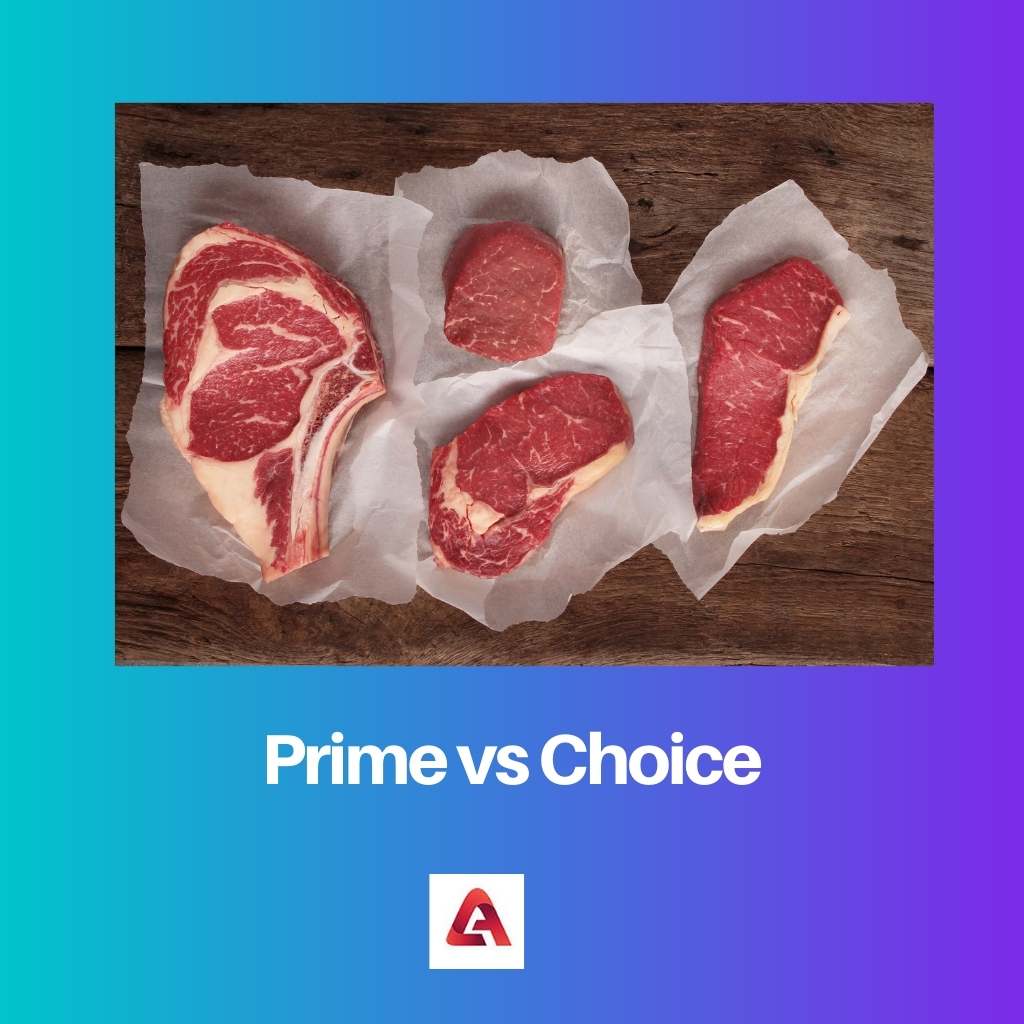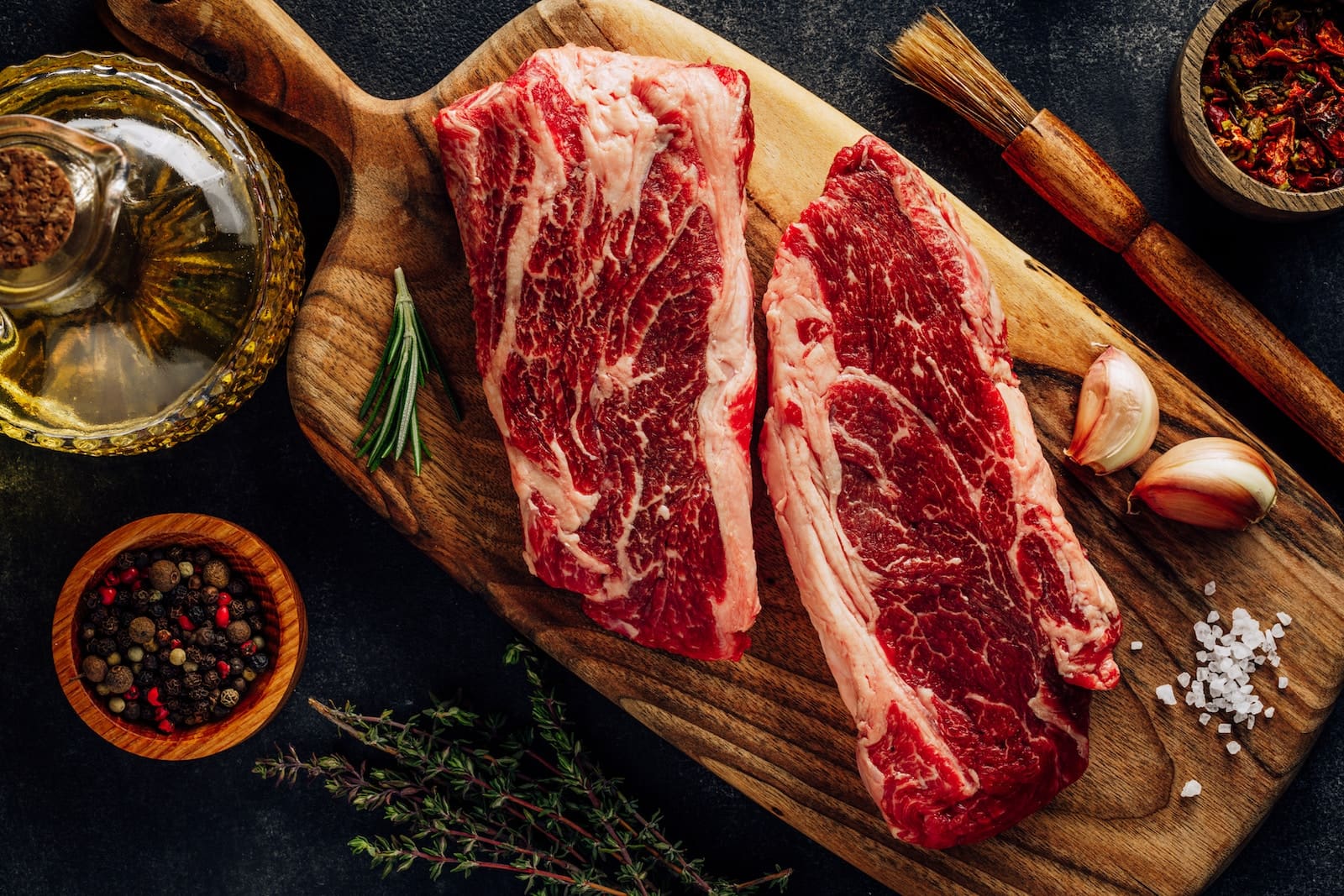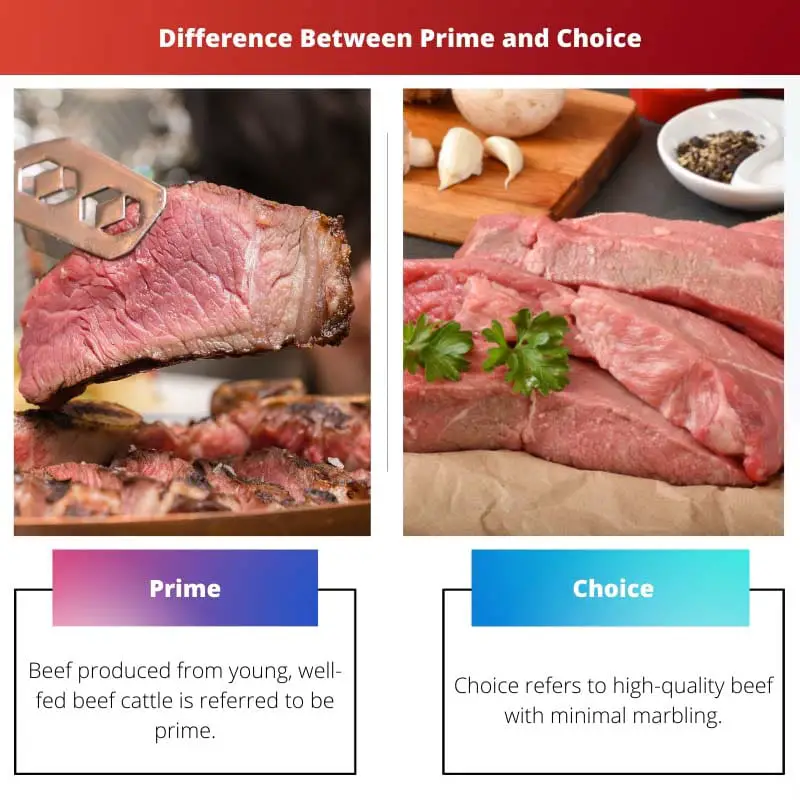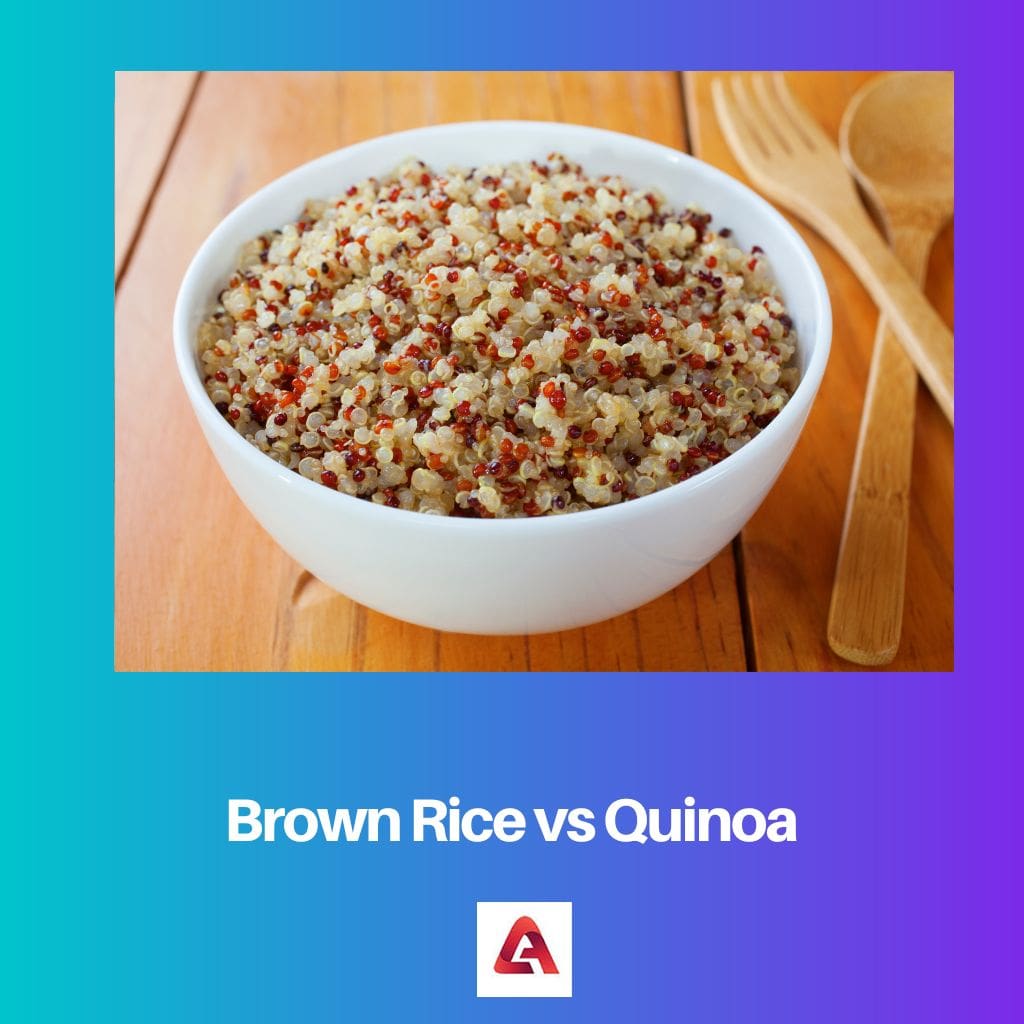Beef is the most widely eaten animal product on the planet. As a result, it is graded and priced differently based on the amount of lean meat yielded and the tenderness, flavour, and juiciness quality ratings.
At the moment of sale, it is graded as Select, Choice, or Prime beef based on the findings.
Key Takeaways
- Prime refers to the highest quality beef with abundant marbling, juiciness, tenderness, and flavor.
- The choice is a high-quality beef grade with less marbling than Prime.
- Prime and choice are considered high-quality meat options, but Prime is more expensive due to its superior quality.
Prime vs Choice
Prime refers to a number that is only divisible by 1 and itself, such as 2, 3, 5, 7, 11, 13, and so on. These numbers are important in mathematics and cryptography, as they are key in many algorithms and encryption. The choice is the act of selecting or deciding between two or more options.

Prime meat is produced from young and well-fed beef cattle and is an excellent choice for grilling, broiling, or roasting. It is very seldom available in supermarkets.
The meat is tender and juicy, with a buttery richness to it. It boasts the finest texture and the highest level of fat marbling. Prime beef is sourced from younger animals.
The second highest grade of beef is Choice. Choice beef has less fat marbling and is less juicy and tender. Choice beef has a rougher texture than regular beef.
Even if it’s cut from the loin and rib portions of a carcass, such as a tenderloin fillet or rib steak, the choice is still a good steak. Choice beef is available at some grocery store meat counters and may also be found in fine steakhouses and restaurants.
Comparison Table
| Parameters of Comparison | Prime | Choice |
|---|---|---|
| Definition | Beef produced from young, well-fed beef cattle is referred to be prime. | Choice, on the other hand, refers to high-quality beef with minimal marbling. |
| Marbling | While prime steak has a lot of marbling | Choice beef has less. |
| Grade | The first grade of beef cattle is prime beef. | Choice meat, on the other hand, is considered second to prime beef. |
| For Popular Use | Grilling, broiling, and roasting prime beef are all excellent options. | Only tender cuts of premium beef, on the other hand, are ideal for grilling, broiling, and roasting, whilst less tender slices are ideal for roasting, braising, and simmering. |
| Availability | While prime steak is only available in limited numbers. | Select beef is accessible at all times of the year. |
What is Prime?
This meat is made from young and well-fed beef cattle and is a fantastic alternative for grilling, broiling, or roasting. It’s commonly found in restaurants and hotels and has a lot of marbling.
In compared to other forms of beef, it is costlier. It has a finite supply. USDA (United States Department of Agriculture) Prime is the top category of beef, accounting for just a small percentage of graded beef.
It’s been hailed as “melt-in-your-mouth softness,” “buttery,” and “the juiciest” beef available. All of this might be true, but it all depends on how you prepare it. No matter how much Prime marbling beef has, overcooking it may turn it into shoe leather.
In my view, no Prime steak should be cooked more than medium, and it is best-served medium-rare, although everyone has their own preferences. Having said that, I’m curious as to whether you cook a Prime steak and a Choice steak to medium-well or well done.
This beef not only passes muster, but it’s also Ivy League-eligible. It is in great demand because of its outstanding quality and intramuscular fat content.
The majority of Prime beef is produced from young, well-fed beef cattle and marketed by upmarket restaurants and Fine Beef Purveyors. Only roughly 2.9 percent of beef qualifies for Prime status.

What is Choice?
This is a premium cut of beef with minimal marbling. It’s juicy, soft, and full of flavour, making it ideal for grilling, broiling, or roasting.
Only tender slices of premium beef, on the other hand, are ideal for grilling, broiling, and roasting. Roasting, braising, and boiling the less sensitive portions are ideal. It is the second-highest grade of beef after prime.
USDA Choice accounts for almost half of all graded beef, which found to be fascinating. USDA Choice is the preferred beef grade in restaurants and can be found in most stores. If a restaurant offers Prime, they will inform you, and the price will be noted in your bill.
Although choice beef is still of high grade, it has less fat marbling. Rather than a coating of fat on the periphery, marbling refers to equally dispersed fat throughout the muscle.
Although the cut is slightly less juicy as a result of this, careful preparation still yields outstanding results. It’s the most accessible grade in supermarkets, accounting for nearly 53% of all beef consumed.
USDA Choice is a fantastic beef grade. Some claim it’s less soft than Prime, with a somewhat rougher texture, but it’s just as delicious and juicy. That may be true, but how you prepare your beef has a lot to do with it.

Main Differences Between Prime and Choice
- Prime beef is made from young, well-fed beef cattle with a lot of marbling. Choice beef is of good grade, however it has less marbling than prime meat.
- In most cases, prime beef is sold in restaurants and hotels. Choice beef may be purchased at various grocery store meat counters as well as elite steakhouses and restaurants.
- Prime roasts and steaks are ideal for dry heat cooking methods, including broiling, roasting, and grilling. Choice roasts and steaks from the loin and rib are particularly soft, juicy, and flavorful and are best cooked over a dry fire.
- Prime is approximately 2.9 percent of beef, making it the only grade of Prime. Choice beef, on the other hand, is the most readily accessible grade in grocery stores and accounts for more than 53% of all edible beef.
- Prime beef is sourced from younger animals. Choice beef, on the other hand, has a rougher texture.





